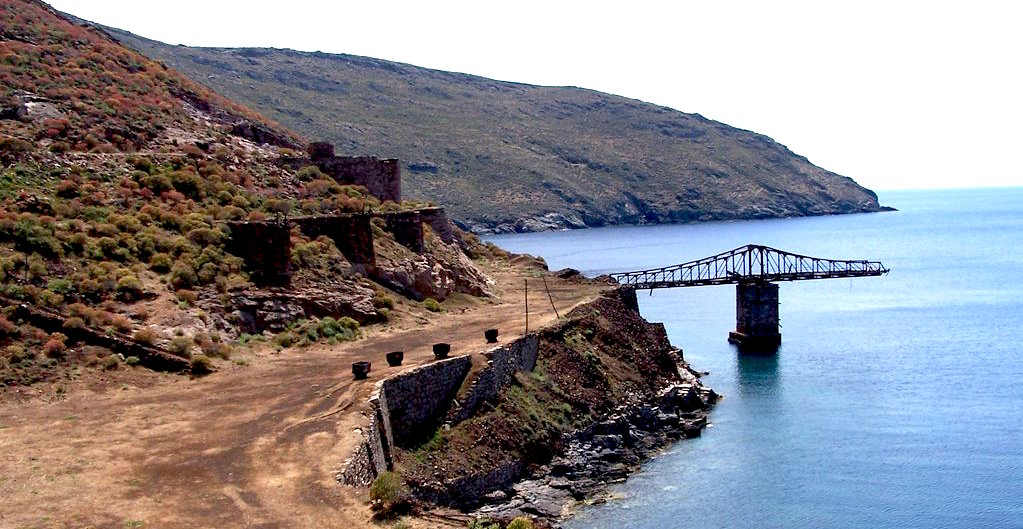During the Venetian rule in the 14th century, the mines of the island covered the needs of the great naval power of the time. Travelers back then talked about the work of slaves in the underground tunnels and the existence of four manors.
With the disbanding of the Duchy of the Aegean by the Ottomans in the 16th century, mining was stopped until the 19th century. The mines that opened at Megalo Livadi and Koutalas became the oldest mines of the island. The "Greek Mining Company" started mining ore in 1869 and remained there until 1875.
After 1880 the French company "Serifos-Spiliazeza" proceeded with the intensive exploitation of Serifos’ minerals. The third company to use the mines of Serifos was "Viar-Sgoutas-Dufour", a Greek-French company, which stayed on the island till 1887.
In 1886 Emil Gkroman, a German mineralogist, took over "Serifos-Spiliazeza". He developed infrastructure for the extraction, transportation and loading of ore on ships. The ore was exported to the USA, England, Sweden and Belgium.
After Emil’s death in 1906, his son, George Gkroman, took over the company. The remaining companies of the island were slowly absorbed by "Serifos-Spiliazeza". Workers from Mykonos, Paros, Karpathos, Evia and Amorgos came to Serifos to become laborers in the mines. In 1912 there were 4,400 people on the island (2,000 worked in the mines). In August 1916, the miners went on strike and due to fights with the police, 8 people died.
In 1933, the son of George Gkroman, named Emil after his grandfather, took over the company. After the war, he was accused that he collaborated with the Germans and he was expelled from the island. "Serifos-Spiliazeza" closed in 1951 and the mines closed in 1965.



